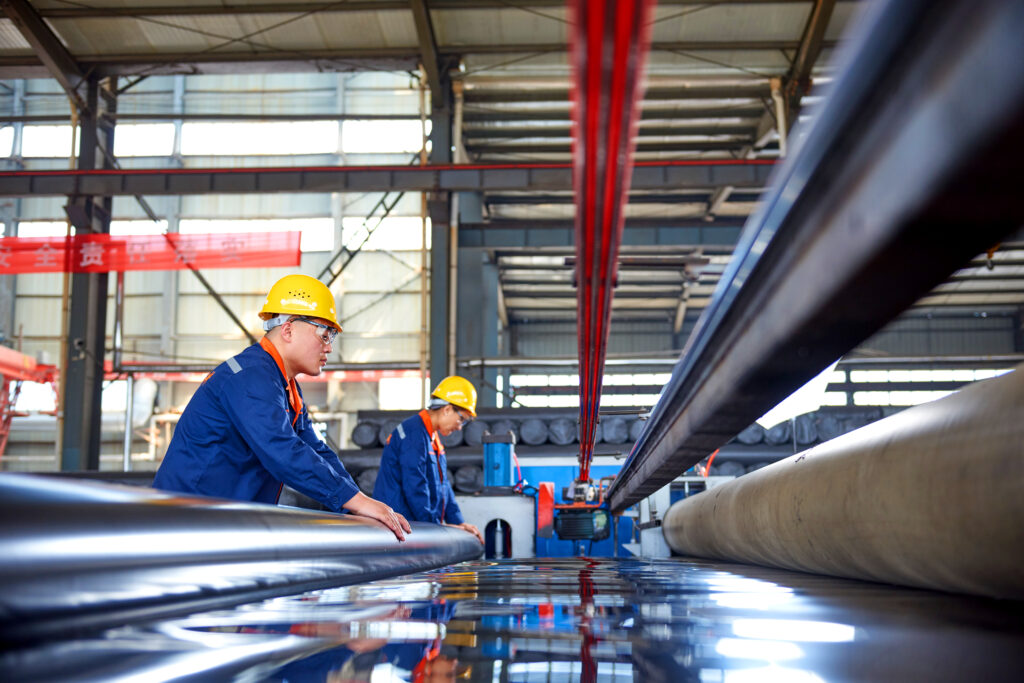Should I use HDPE or PVC for fish pond geomembrane?
When choosing a geomembrane material for a fish pond, both HDPE (High-Density Polyethylene) and PVC (Polyvinyl Chloride) are popular options, each with its own advantages and considerations. Here’s a comparison to help you decide:
HDPE (High-Density Polyethylene)
Advantages:
Durability: HDPE is highly durable and resistant to punctures, tears, and UV radiation, making it suitable for long-term use.
Chemical Resistance: It has excellent chemical resistance, which is beneficial if the pond is exposed to contaminants or chemicals.
Longevity: HDPE liners typically have a long lifespan, often lasting 20-30 years or more.
Environmental Impact: HDPE is considered more environmentally friendly as it is recyclable and has a lower environmental footprint.
Disadvantages:
Flexibility: HDPE is less flexible than PVC, making it harder to install in complex pond shapes or in colder weather.
Seaming: Seaming HDPE liners often requires specialized equipment and expertise, such as heat welding.
PVC (Polyvinyl Chloride)
Advantages:
Flexibility: PVC is more flexible and easier to install, especially in ponds with complex shapes or in cooler temperatures.
Cost: PVC liners are generally less expensive upfront compared to HDPE liners.
Ease of Repair: Repairs on PVC liners can be simpler and often do not require specialized equipment.
Disadvantages:
Durability: PVC is less resistant to punctures and UV radiation compared to HDPE, which may reduce its lifespan.
Chemical Leaching: Over time, PVC can leach chemicals, which might not be ideal for fish health.
Environmental Impact: PVC production and disposal have a higher environmental impact compared to HDPE.
Conclusion
Choose HDPE if durability, longevity, and chemical resistance are your primary concerns, and you are prepared to handle the more complex installation process.
Choose PVC if you need a more flexible, cost-effective solution that is easier to install and repair, and you are less concerned about long-term durability and environmental impact.
For fish ponds, especially where fish health and water quality are critical, HDPE is often the preferred choice due to its superior durability and chemical resistance. However, if ease of installation and cost are significant factors, and the pond design is more intricate, PVC could be a better option.
Consider the specific requirements of your pond project and possibly consult with a professional to make the best decision for your situation.

Is it more expensive to use HDPE geomembrane for fish ponds?
Using HDPE geomembrane for fish ponds can be more expensive initially compared to PVC due to several factors:
Cost Factors
Material Cost:
HDPE: The raw material cost of HDPE is generally higher than PVC. This contributes to a higher upfront expense.
PVC: PVC is less expensive per square foot compared to HDPE, making it a more cost-effective option in terms of initial material cost.
Installation:
HDPE: Installation of HDPE liners can be more complex. They often require specialized welding equipment and skilled labor for proper seam sealing, which adds to the overall cost.
PVC: PVC liners are easier to handle and install. They are more flexible and can be installed without specialized equipment, reducing labor costs.
Durability and Longevity:
HDPE: Although more expensive initially, HDPE liners are more durable and have a longer lifespan, potentially reducing long-term maintenance and replacement costs.
PVC: While cheaper upfront, PVC liners may require more frequent repairs or replacement, which could increase costs over time.
Long-Term Considerations
Maintenance Costs:
HDPE: Less frequent maintenance and lower risk of punctures or tears can result in lower long-term costs.
PVC: More susceptible to damage and degradation, which might lead to higher maintenance and replacement expenses over the pond’s lifetime.
Environmental Impact:
HDPE: Has a lower environmental footprint, is recyclable, and offers better resistance to environmental stressors.
PVC: Higher environmental impact due to potential chemical leaching and less favorable disposal options.
Conclusion
While HDPE geomembranes may have a higher initial cost compared to PVC, they offer significant long-term benefits such as durability, lower maintenance, and longer lifespan. This can make HDPE more cost-effective over the lifetime of the fish pond. However, if initial budget constraints are a primary concern and the pond design is complex, PVC might be a more viable option despite the potential for higher long-term costs.
Ultimately, the choice between HDPE and PVC should be based on a balance of initial budget, long-term cost considerations, durability requirements, and environmental impact. Consulting with a professional who can assess the specific needs of your fish pond project is advisable to make the most informed decision.

